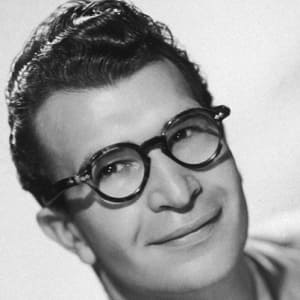
Benny Andersson
Benny Andersson is a musician who played keyboard for 1970s pop super-group ABBA.
Synopsis
ABBA, with keyboardist Benny Andersson, really took off with their third album, anchored by the popular song "Mamma Mia," which placed ABBA atop the UK chart, a spot it would hold nine times between 1974 and 1980. Its two greatest hits collections, were hugely successful, while singles such as "Dancing Queen" and "Take a Chance on Me" sparked a wave of popularity for the band in the United States.
Early Life
Born Göran Bror Benny Andersson on December 16, 1946, in Stockholm, Sweden, to a musical family. Andersson's father and grandfather both loved to play music, and at the age of 6 the future ABBA star was introduced to the accordion. Like he would with almost every other instrument he'd pick up later in life, Andersson took to it without much effort.
Following his time in high school, Andersson signed on as the keyboardist for The Hep Stars, a successful pop band in the 1960s that was affectionately known as "The Swedish Beatles." While touring, Andersson met Björn Ulvaeus, a songwriter and member of the folk band The Hootenanny Singers. ABBA's foundation was slowly being laid. Not only did Andersson and Ulvaeus quickly become friends, but Ulvaeus' group had signed with the recoding label Polar Music, whose owner, Stig Anderson, would eventually become ABBA's manager.
Following the demise of The Hep Stars in the late 1960s, Andersson and Ulvaeus put out their own LP. The record, however, only sold moderately well.
Founding ABBA
In 1969 Anderson and Ulvaeus met two other musicians, Anna-Frid "Frida" Lyngstad and Agnetha Fältskog. The two couples (Ulvaeus and Agnetha married in 1971; Andersson and Frida exchanged vows in 1978) soon began playing together. At first, the collaboration took the shape of working on one another's respective recordings. Finally, the four came together as a single group known as Festfolket. But success was not easily found. It was only 1972, after the group had reorganized under a new name, Björn & Benny, Agnetha & Anni-Frid, that the four made a name for themselves with the moderately popular single, "People Need Love."
The group's harmonies, and catchy musical structures in particular, were a big draw for audiences. In 1973, the band maintained its momentum with another hit single, "Ring Ring." The song took third place in the highly influential Eurovision Song Contest, and received airtime on radio stations around Europe.
A year later the band, working under the new name of ABBA, an acronym of their first names, was rewarded with top honors at the Eurovision Song Contest for the single "Waterloo." The song shot up the charts around Europe, and their debut album of the same name proved to be popular as well.
But it wasn't until their self-titled third record that ABBA truly took off. The album was anchored by the wildly popular single "Mamma Mia", which placed ABBA atop the UK chart, a spot it would hold nine times between 1974 and 1980. In all, the group owned the pop charts in UK and Australia for much of the 1970s. Its two greatest hits collections, both issued in 1976, were hugely successful, while singles such as "Dancing Queen" and "Take a Chance on Me" sparked a wave of popularity for the band in the United States.
Over the course of its run, the band achieved unrivaled success. Between 1975 and 1982, ABBA released 17 consecutive singles that occupied a spot in the UK Top Five. From 1975 to 1980 the group sat atop the UK album charts for 35 weeks, the only band ever to do so. Overall, ABBA would go on to sell more than 350 million records, with a good portion of the success attributed to Andersson, who with Ulvaeus, wrote and produced all of the group's work.
Break-ups
With the onset of the 1980s, however, cracks in ABBA's foundation began to show. In 1979 Ulvaeus and Agnetha divorced; two years later Andersson and Frida followed suit, ruining the group's image of two happy couples making music together. There was interest, too, from Andersson and Ulvaeus in creating projects outside of ABBA. Finally, in 1982, the group took what its members called a temporary break.
In the years since, ABBA has still not reformed, despite heavy interest from fans. For a time, there were even reports the group had been offered $1 billion to reunite. Andersson, for one, dismissed the rumor and also squashed any hopes ABBA fans might have of seeing the band take the stage one more time.
"We all feel the same," he told Rolling Stone in 2010, after it was announced that the group would be inducted into the Rock and Roll Hall of Fame. "It's been too long. It's been almost 30 years. There is no reason. I can't understand the bands that reunite, because there will always be a reason, whether it be economic reasons or the fun of it … being on the stage again. We don't have that."
That's not to suggest Andersson hasn't been making music. Since ABBA's end, he's had his hand in a number of different projects, a portion of it harkening back to his early interest in Swedish folk music. Here and there Andersson, now a grandfather five and the proud recipient of an honorary doctorate from the University of Stockholm, has worked with his old friend, Björn Ulvaeus. A good portion of Andersson's post-ABBA work, however, has revolved around his group The Benny Andersson Band, which released its most recent album, Story of a Heart, in 2009.
Related Videos
ABBA – Mini Bio(TV-14; 2:44)




